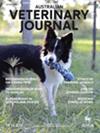Case series report: Equine coronavirus in Australia
Abstract
Background
Equine Coronavirus (ECoV) can cause gastrointestinal disease and was first described in 2000 in the USA followed by several international outbreak case reports. Disease manifestation is characterised by vague clinical signs, including mild pyrexia, lethargy and anorexia. Morbidity ranges greatly from 10% to 83%. Although uncommon, ECoV may result in death secondary to disruption to the gastrointestinal barrier causing endotoxaemia and hyperammonaemic encephalopathy. Unfortunately to date, there is no vaccine available to prevent ECoV.
Case reports
Three faecal quantitative polymerase chain reaction (qPCR)-positive ECoV cases are described that presented with mild to severe colic signs: a 2-year-old Miniature Pony gelding from South Australia, an 8-year-old Arabian Riding Pony gelding, and a 6-year-old Warmblood mare, both from Western Australia. The diagnosis was based on a positive faecal qPCR, which is currently the gold standard diagnostic tool. All horses in this case series survived after medical management. The Miniature Pony presented with anorexia and mild colic signs. On day 5, the pony revealed severe colic signs unresponsive to analgesia along with severe abdominal distension secondary to caecal distension requiring surgical intervention.
Conclusion
To the authors' knowledge, this case series is the first published report of ECoV cases in Australia, and it adds both to the clinical description of the disease in horses and to the differential diagnosis list of colic signs.

 求助内容:
求助内容: 应助结果提醒方式:
应助结果提醒方式:


